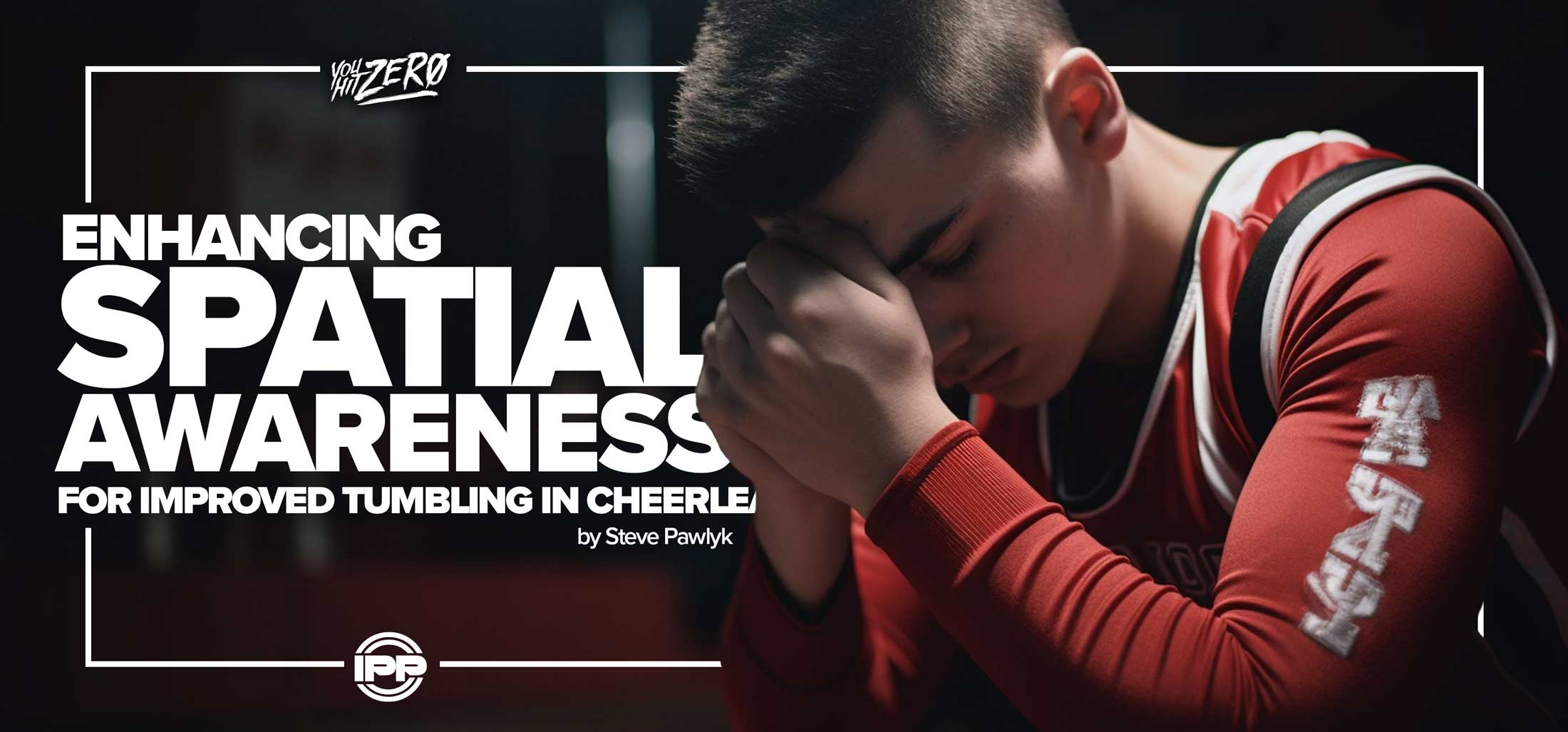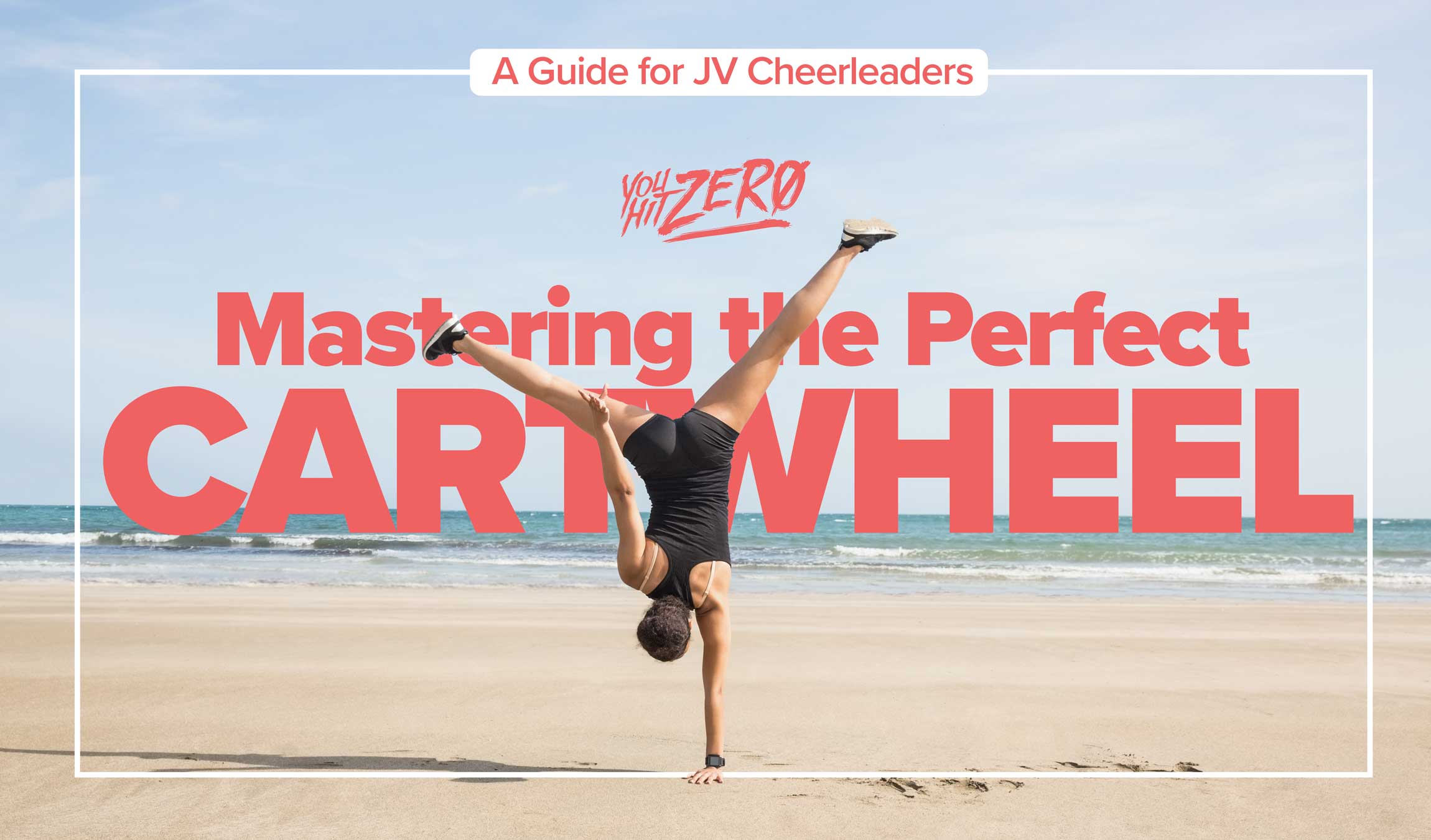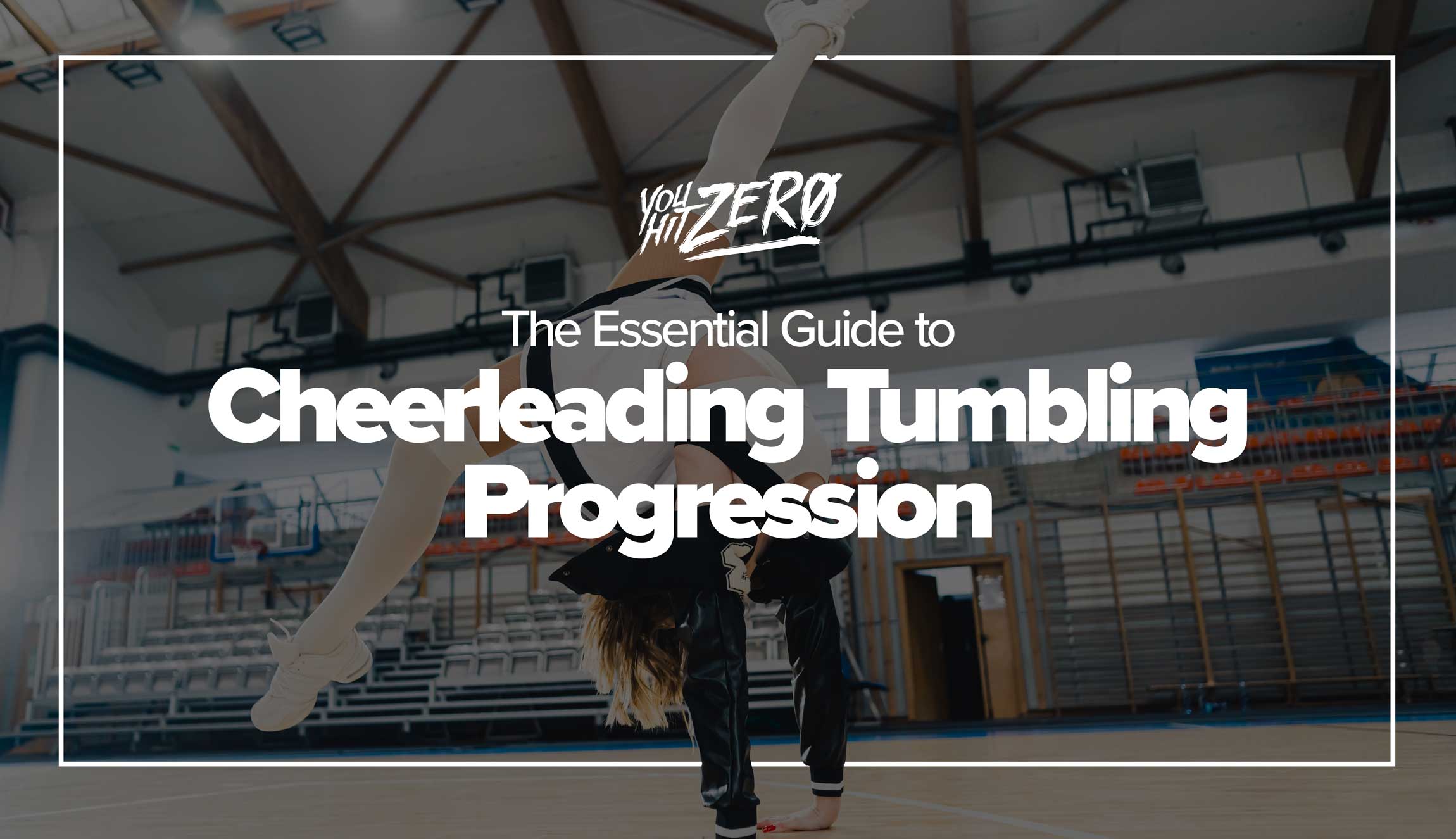By Steve Pawlyk
Published August 1, 2023
Cheerleading is a demanding sport that requires a high degree of physical strength, agility, and precision. Among these crucial skills, spatial awareness stands out as a significant contributor to a cheerleader’s performance, particularly in tumbling. If you’re a cheerleader finding yourself getting lost mid-full, you’re not alone. We’re here to discuss strategies that can help you refine your spatial awareness and get back on track with your tumbling.
Spatial awareness is a sense of one’s physical position in relation to the surroundings. In cheerleading, it is essential for executing complex tumbling sequences, like standing fulls or full whips, without losing orientation. However, developing and maintaining this sense can be challenging.
Revisit Basics
When struggling with spatial awareness during complex sequences, it can be beneficial to revisit the basics. Try practicing simpler moves and gradually increasing the difficulty. This can help your body regain the sense of spatial orientation and build a solid foundation.
Mental Visualization
Visualize your routines. Before executing a move, imagine each step vividly in your mind. Picture yourself in the air, your rotation, and your landing. This mental rehearsal can help improve your spatial awareness and execution of the skills.
Eye-Focus Training
Try to consciously keep your eyes open during your routines. It’s common for cheerleaders to close their eyes involuntarily during tumbling, which can disrupt spatial orientation. Practice drills where you focus on a particular point during the maneuver can help you stay oriented.

Use Spotting Techniques
Spotting techniques involve focusing on a particular point in your surroundings to maintain balance and orientation. These can be incredibly helpful during full rotations and can prevent you from getting lost mid-move.
Invest in Coaching and Feedback
If you’re still struggling, consider seeking advice from your coach or even investing in additional professional guidance. They can provide personalized feedback, identify problem areas, and suggest targeted exercises to improve your spatial awareness.
Try Proprioceptive Exercises
Proprioceptive exercises that focus on balance and body movement can help improve your spatial awareness. These can include activities like yoga, Pilates, or even specific balance-focused exercises on a stability ball or BOSU.
Refining your spatial awareness as a cheerleader can feel like an uphill battle, but with the right strategies and dedication, you can regain your confidence and excel in your tumbling. Remember, it’s essential to be patient with yourself during this process. Improvements might not be noticeable overnight, but consistent effort will yield results
IPP's Premade Mixes are USA Cheer Compliant and customizable! Add Sound FX, swap songs, & more! Add your Team Name to the mix for only $10!












